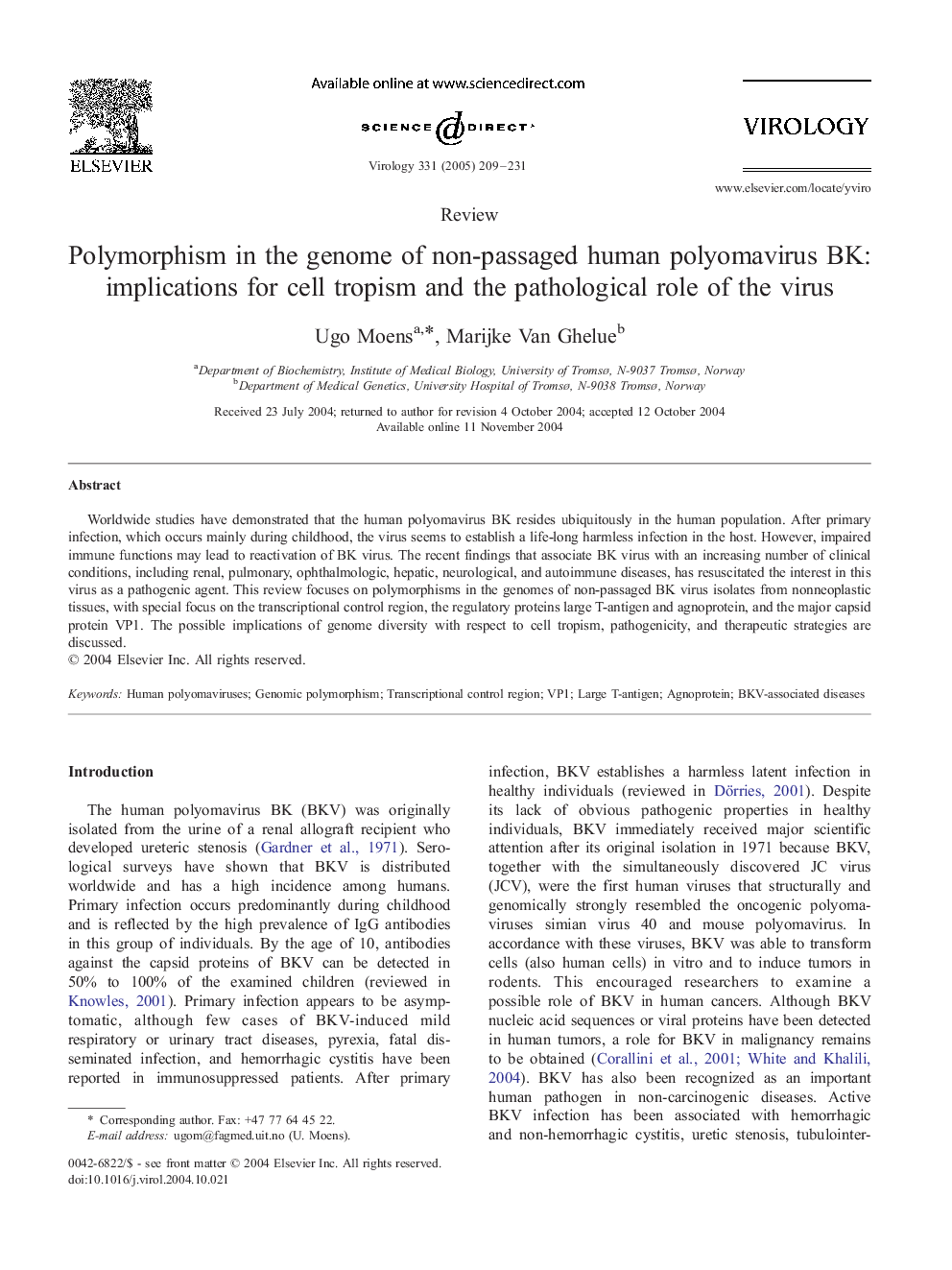| Article ID | Journal | Published Year | Pages | File Type |
|---|---|---|---|---|
| 9288360 | Virology | 2005 | 23 Pages |
Abstract
Worldwide studies have demonstrated that the human polyomavirus BK resides ubiquitously in the human population. After primary infection, which occurs mainly during childhood, the virus seems to establish a life-long harmless infection in the host. However, impaired immune functions may lead to reactivation of BK virus. The recent findings that associate BK virus with an increasing number of clinical conditions, including renal, pulmonary, ophthalmologic, hepatic, neurological, and autoimmune diseases, has resuscitated the interest in this virus as a pathogenic agent. This review focuses on polymorphisms in the genomes of non-passaged BK virus isolates from nonneoplastic tissues, with special focus on the transcriptional control region, the regulatory proteins large T-antigen and agnoprotein, and the major capsid protein VP1. The possible implications of genome diversity with respect to cell tropism, pathogenicity, and therapeutic strategies are discussed.
Keywords
Related Topics
Life Sciences
Immunology and Microbiology
Virology
Authors
Ugo Moens, Marijke Van Ghelue,
